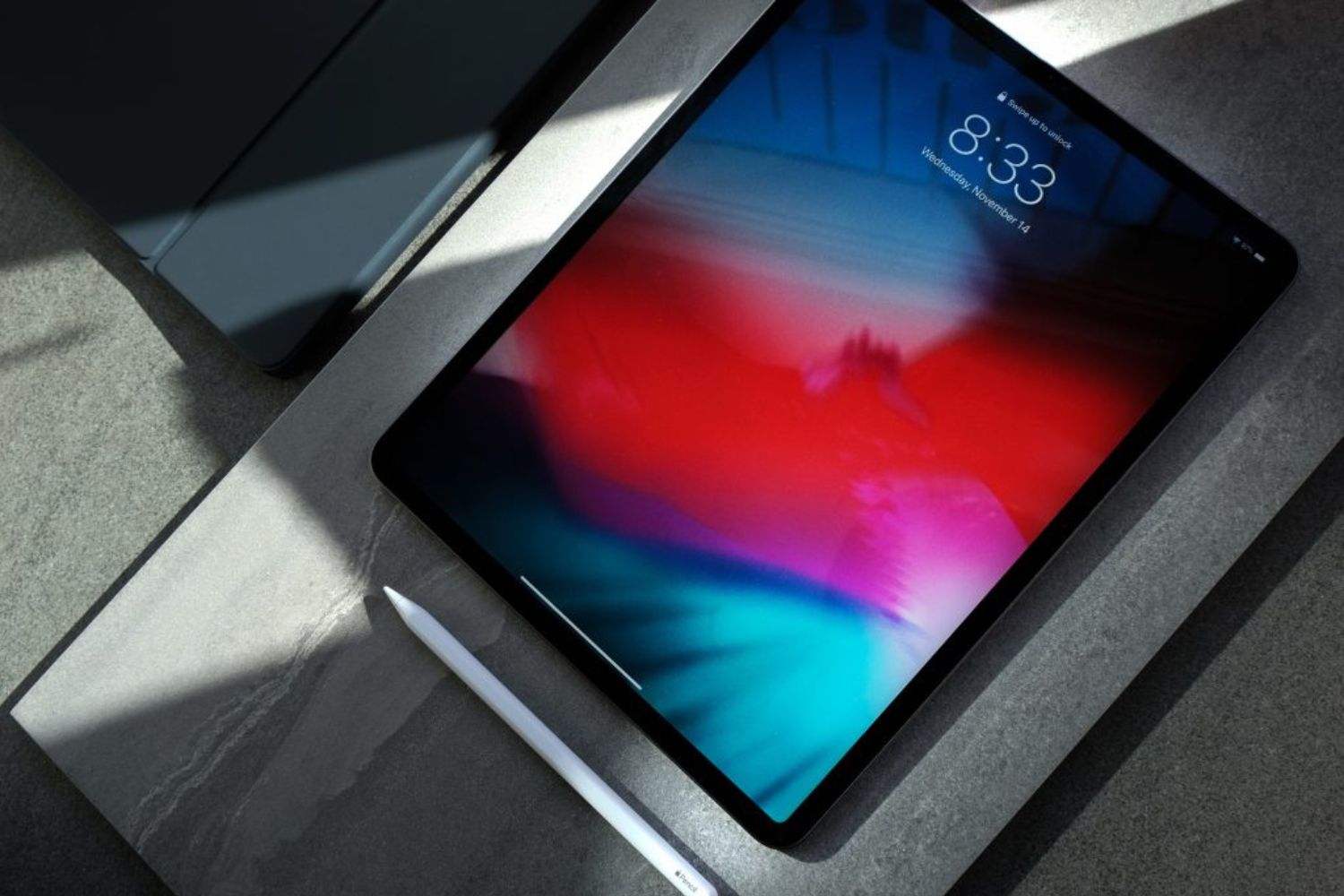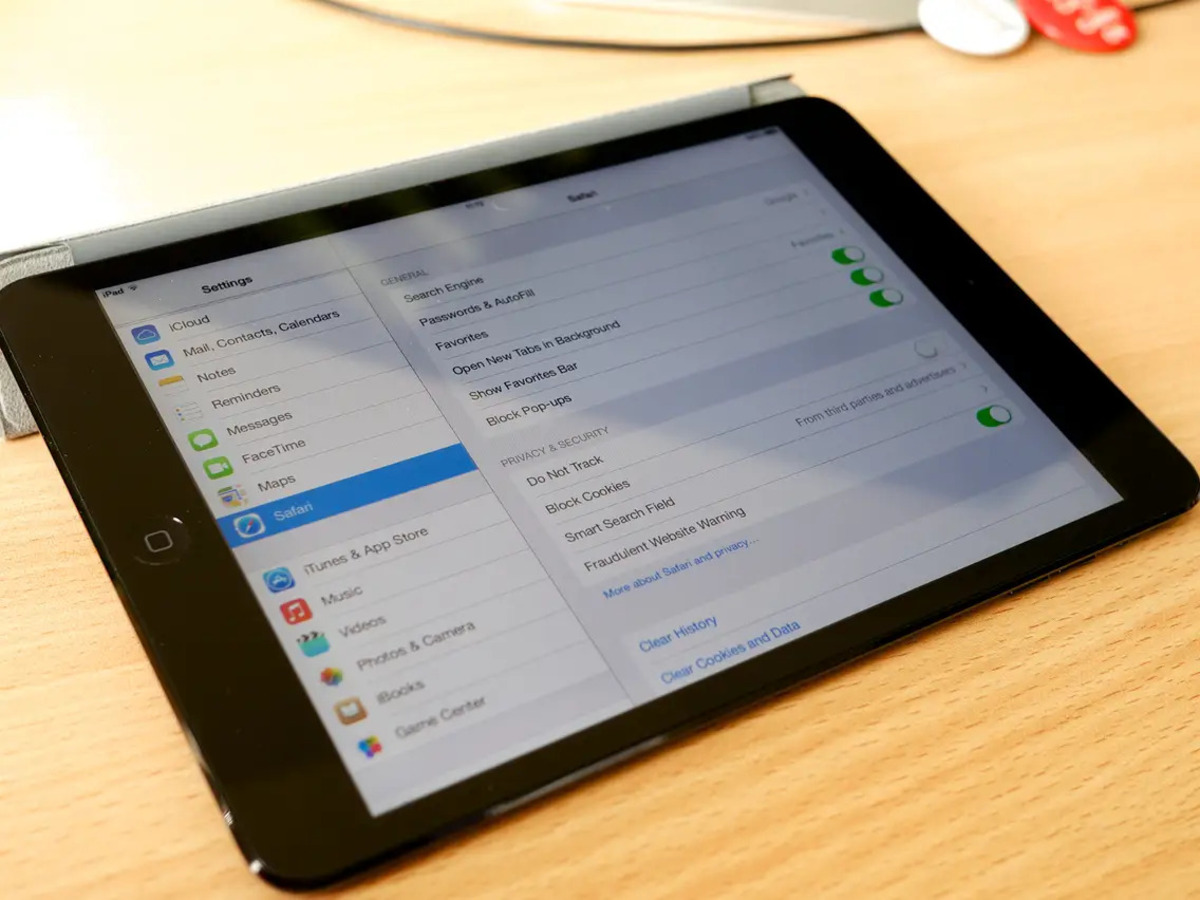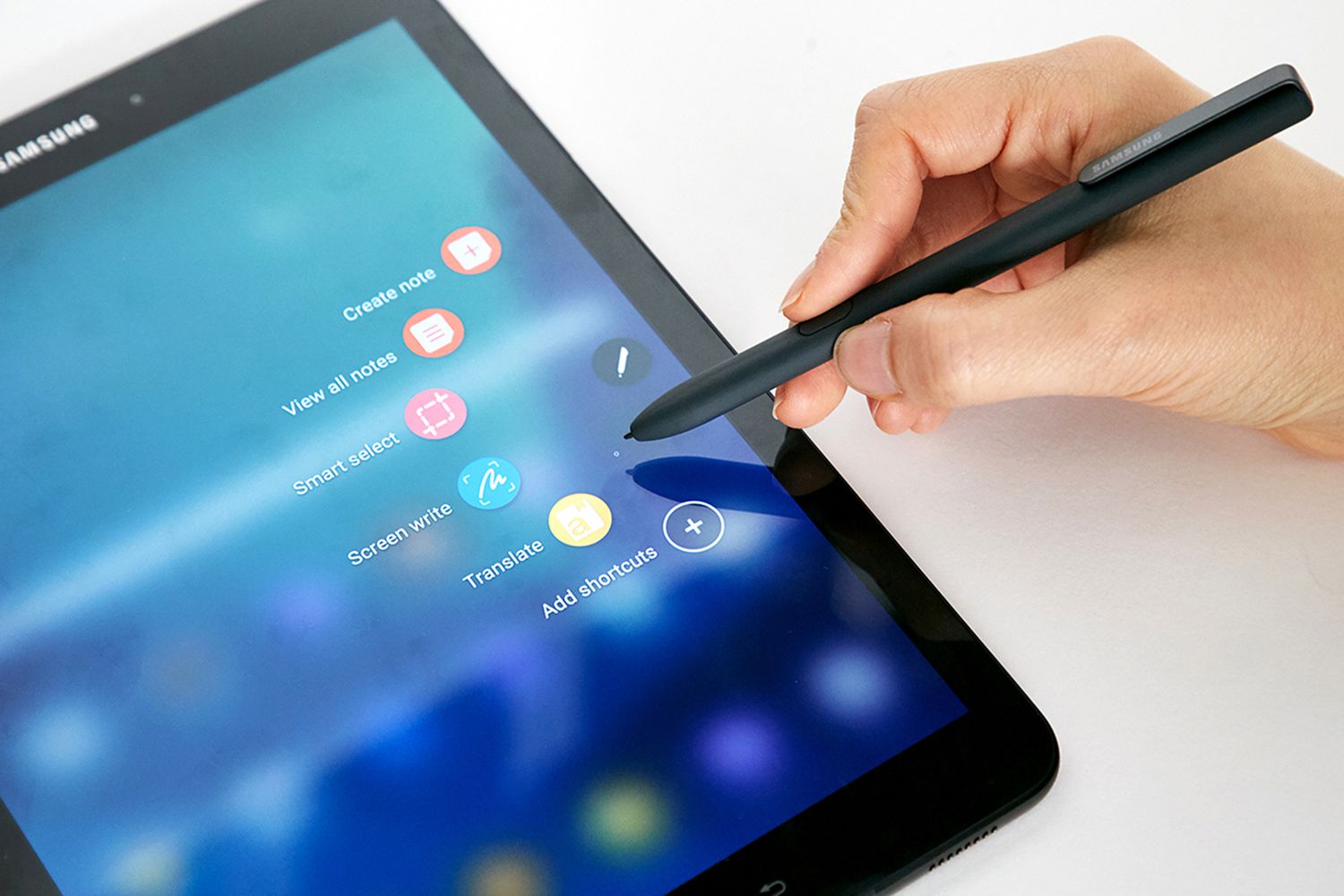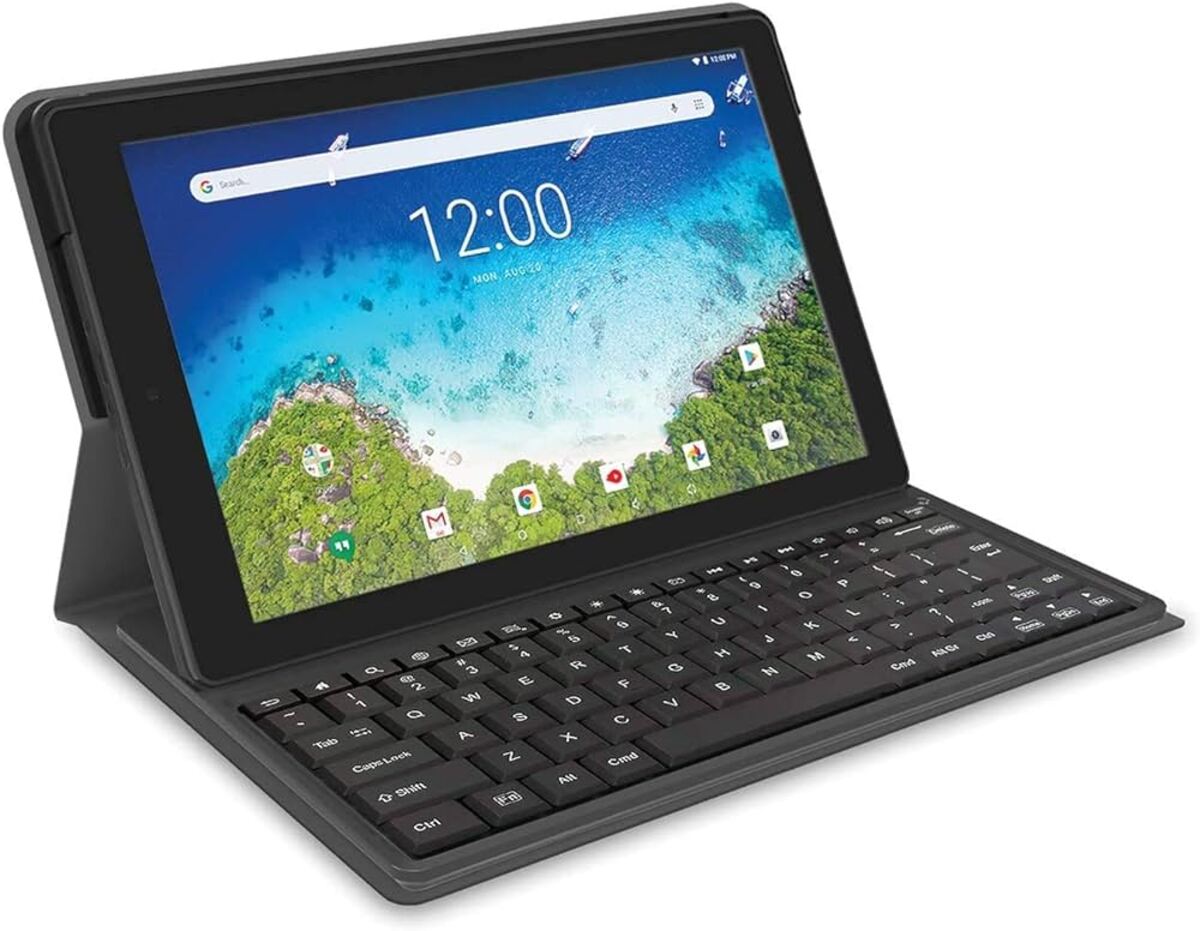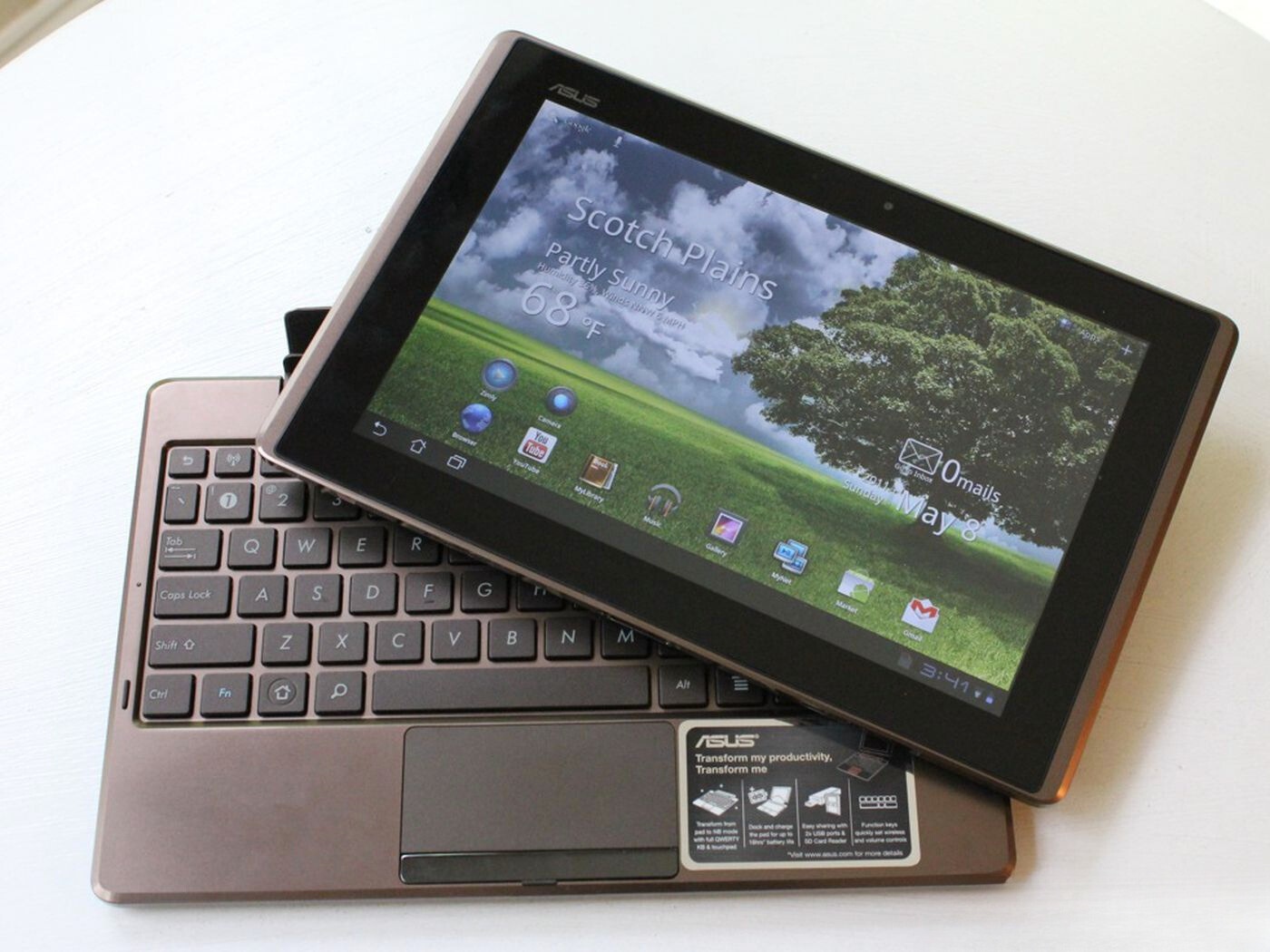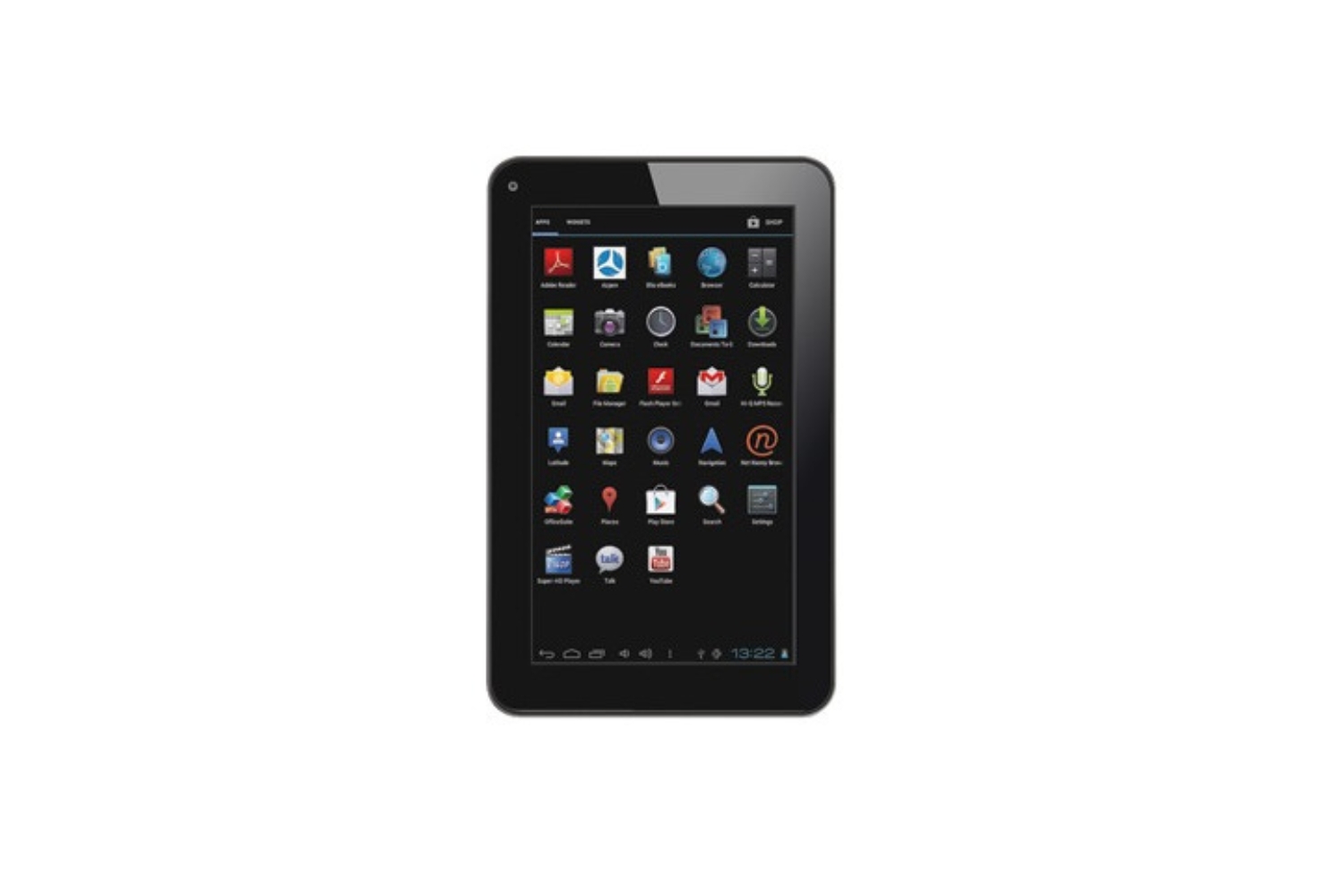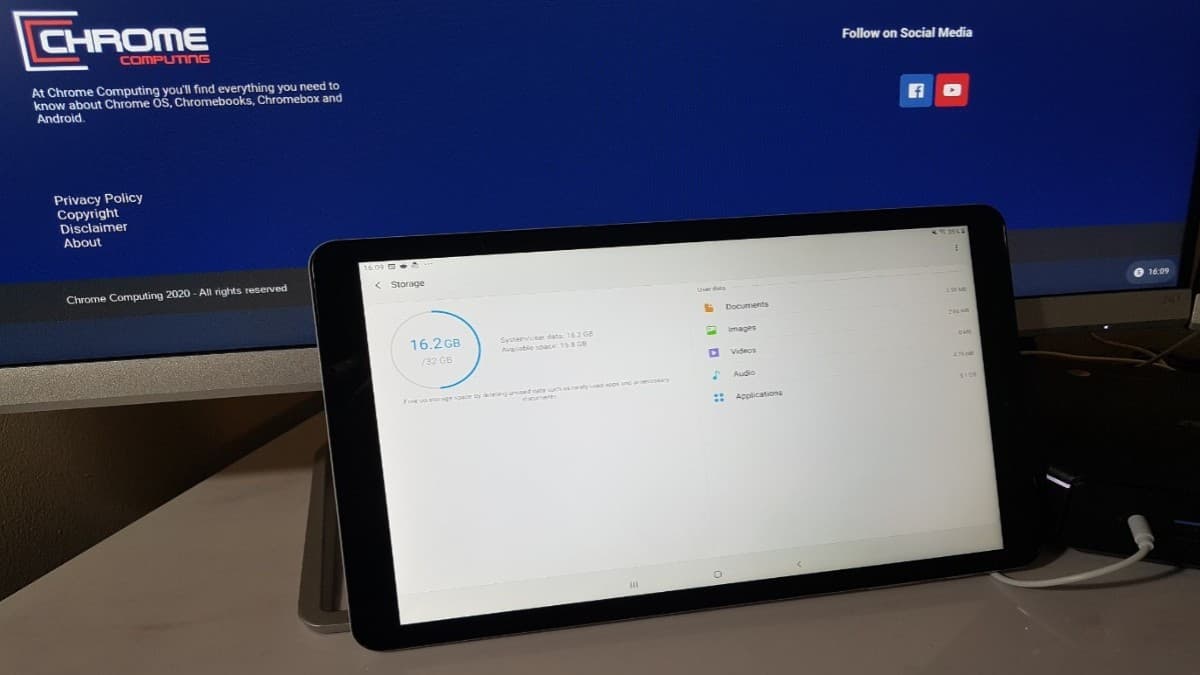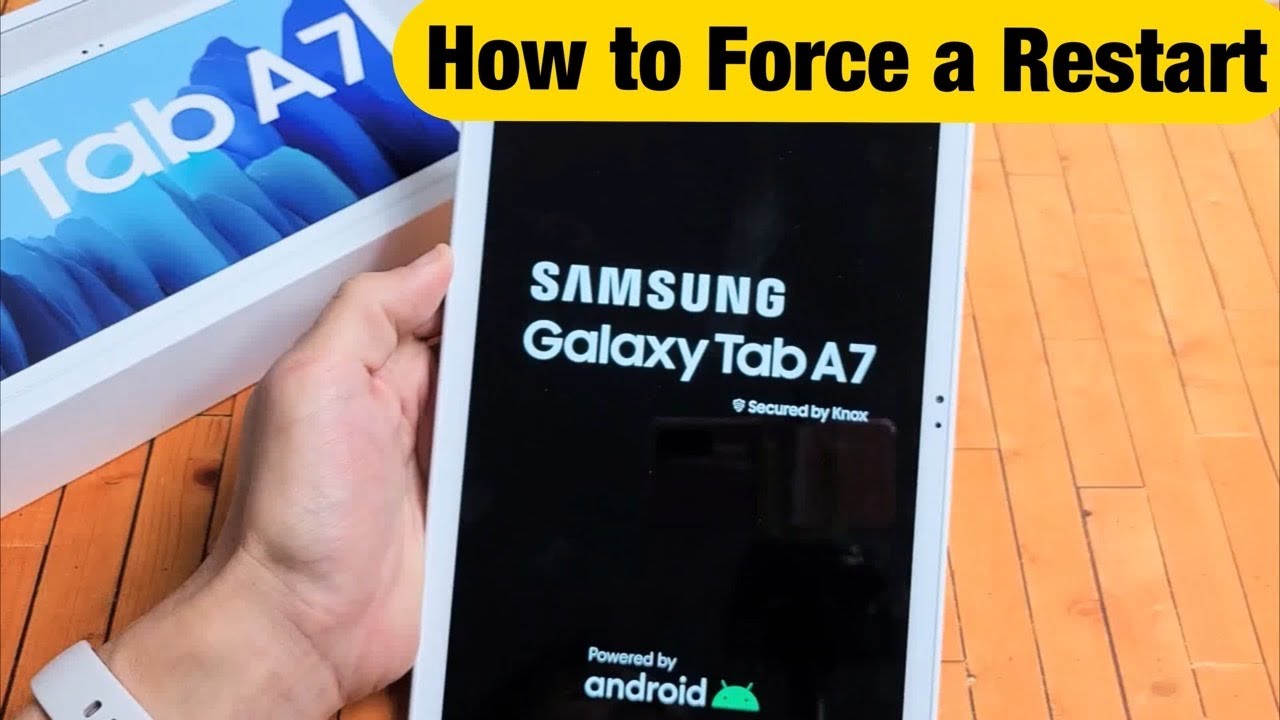Common Causes of Tablet Freezing
Tablet freezing can be frustrating and disruptive to your mobile experience. Understanding the common causes behind this issue can help you troubleshoot and resolve the problem more effectively. Here are some of the most common causes of tablet freezing:
- Insufficient storage space: When your tablet’s storage is almost full, it can lead to performance issues and freezing. Make sure to regularly clean up unnecessary files and apps to free up space.
- Overloaded RAM: Running too many apps or tasks simultaneously can overload the tablet’s RAM, causing it to freeze. Closing unused apps or restarting the tablet can help alleviate this issue.
- Running too many apps simultaneously: Similar to RAM overload, having multiple resource-intensive apps running at the same time can strain the tablet’s processor and cause freezing.
- Outdated software or operating system: Using outdated software or operating system on your tablet can result in compatibility issues and instability, leading to freezing problems.
- Malware and viruses: Tablets are not immune to malware and viruses. If your tablet is infected, it can slow down and freeze. Running regular malware scans and keeping your tablet’s security up to date is essential.
- Hardware issues: Physical hardware problems, such as a faulty battery, charging port, or memory card, can contribute to freezing. In such cases, it may be necessary to seek professional repair or replacement.
- Overheating: Tablets generate heat, and excessive heat buildup can cause freezing. Avoid using your tablet in direct sunlight or hot environments, and give it breaks during heavy usage.
Identifying the root cause of tablet freezing is crucial for effective troubleshooting. By addressing these common causes, you can improve the performance and reliability of your tablet, minimizing the occurrence of freezing issues.
Insufficient storage space
One of the frequent causes of tablet freezing is insufficient storage space. When your tablet’s internal storage is almost full, it can lead to performance issues and freezing. Here’s why:
As you use your tablet, various files and apps accumulate and occupy valuable storage space. When the available storage reaches its limit, the tablet may struggle to perform tasks efficiently, resulting in lagging or freezing. Additionally, insufficient storage can hinder the proper functioning of system processes and apps, leading to instability.
To address this problem, you need to free up storage space on your tablet. Start by identifying and removing unnecessary files and apps. Go through your photo gallery and delete any duplicate or unwanted images. Clear your download folder of files you no longer need. Uninstall unused apps that are taking up significant space. You can also transfer large files, such as videos or documents, to cloud storage services or an external drive.
Clearing the cache of your apps can also help in optimizing storage. Cached data can accumulate over time, occupying a significant portion of your storage space. Clearing the cache will remove temporary files, freeing up storage and potentially improving system performance.
Another option is to move apps from internal storage to an external SD card if your tablet supports it. Not all apps can be moved, but for those that can, it can be a useful way to free up space on your tablet’s internal storage.
Regularly managing your tablet’s storage space is essential for maintaining its performance and preventing freezing issues. If you find that insufficient storage continues to be a problem despite your efforts, you may consider investing in a tablet with larger storage capacity for a more seamless experience.
Overloaded RAM
Another common cause of tablet freezing is an overloaded Random Access Memory (RAM). RAM is responsible for temporarily storing and accessing data that is actively being used by the tablet’s operating system and running apps. When the RAM becomes overloaded, it can lead to lagging and freezing. Here’s how this can happen:
Running too many apps or tasks simultaneously can consume a significant amount of RAM. Each app you open requires a portion of the available RAM to function smoothly. If you have numerous apps running in the background or have opened several resource-intensive apps at once, it can cause the RAM to get overloaded, leading to performance issues and freezing.
To address this problem, you can start by closing unused apps. Go through the list of running apps and manually close those that you are not actively using. This will free up some of the RAM and help improve the overall performance of your tablet.
If you often find yourself multitasking or running several resource-intensive apps simultaneously, it may be worth considering upgrading to a tablet with more RAM. Tablets with higher RAM capacity can handle multi-tasking more efficiently and are less prone to freezing due to RAM overload.
Additionally, restarting your tablet can also help alleviate the overloaded RAM issue. Restarting clears the RAM, freeing up the resources previously allocated to different apps. It can be an effective temporary solution, especially if you notice that your tablet is freezing frequently.
Managing your tablet’s RAM usage is crucial for maintaining smooth performance. By being mindful of the number of apps you have open and considering the RAM capacity when purchasing a tablet, you can reduce the chances of encountering freezing issues caused by overloaded RAM.
Running too many apps simultaneously
Running multiple apps simultaneously on your tablet can be convenient, but it can also contribute to freezing issues. When your tablet’s processor is overloaded with too many active applications, it may struggle to handle the workload efficiently, leading to lagging and freezing. Here’s why this happens:
Each app that is running on your tablet requires a portion of the processor’s resources to function properly. When you have numerous apps running simultaneously, the processor has to divide its resources among them, resulting in slower performance and potential freezing.
To prevent this issue, it’s important to be mindful of the number of apps you have open at any given time. Close any unnecessary apps that are running in the background and prioritize the ones you truly need.
Another useful practice is to use the app switcher or task manager feature on your tablet to monitor and manage your currently running apps. This allows you to easily close any apps that are consuming significant resources and causing a strain on the processor.
If you find yourself frequently running multiple resource-intensive apps simultaneously and experiencing freezing issues, it may be worth considering upgrading to a tablet with a more powerful processor. Tablets with better processors can handle multitasking more efficiently and are less likely to freeze due to excessive app usage.
It’s important to strike a balance between convenience and performance when it comes to running apps on your tablet. By being mindful of the number and resource requirements of the apps you have open, you can reduce the chances of encountering freezing issues caused by running too many apps simultaneously.
Outdated software or operating system
Using outdated software or operating system on your tablet can contribute to freezing issues. As technology advances, developers release updates to improve performance, fix bugs, and enhance security. If you’re running an outdated software or operating system, your tablet may encounter compatibility issues and instability, leading to freezing problems.
Outdated software may not be optimized for the latest hardware and can struggle to keep up with the demands of newer apps and processes. This can result in lagging and freezing when trying to perform simple tasks.
To address this issue, it’s important to regularly update the software and operating system of your tablet. Check for any available updates in the Settings menu of your tablet and install them as soon as they become available.
Updating your tablet’s software and operating system not only enhances its performance but also ensures compatibility with the latest apps and services. It can also provide important security patches, protecting your tablet from potential vulnerabilities and malware attacks.
If your tablet is no longer receiving software updates from the manufacturer, it may be a sign that it’s time to consider upgrading to a newer model. Newer tablets often come with improved hardware and more up-to-date software, providing a smoother and more reliable user experience.
By keeping your tablet’s software and operating system up to date, you can minimize the risk of freezing issues caused by compatibility and performance limitations of outdated software.
Malware and viruses
Malware and viruses pose a significant threat to the performance and stability of your tablet. If your tablet becomes infected, it can slow down, freeze, and even compromise your personal data. Here’s why malware and viruses can cause freezing issues:
Malicious software can consume system resources and interfere with normal processes, leading to freezing and performance degradation. Additionally, some malware may be designed to exploit vulnerabilities in the operating system or specific apps, causing them to crash or become unresponsive.
Preventing malware and viruses is crucial for maintaining the smooth operation of your tablet. Here are some steps you can take:
Firstly, ensure that you have reliable security software installed on your tablet. Antivirus and anti-malware apps can detect and remove potential threats. Keep this software updated regularly to ensure it can effectively detect and protect against the latest threats.
Secondly, exercise caution when downloading apps or files from unknown sources. Stick to reputable app stores such as Google Play Store or Apple App Store, as they usually have stringent security measures in place to mitigate the risk of malware-infected apps.
Thirdly, be wary of suspicious links or attachments in emails, messages, or websites. Phishing attempts often disguise themselves as legitimate sources, enticing users to click on them, which can lead to malware installation. Always verify the authenticity of the source before clicking on any links or downloading any files.
Lastly, regularly scan your tablet for malware and viruses. Many security apps offer scheduled or on-demand scans that can detect and remove any potential threats lurking on your device.
If you suspect that your tablet is infected, running a comprehensive scan should be your first step. Quarantine any detected threats and follow the instructions provided by your security software to remove them.
By taking proactive measures to prevent malware and viruses, you can significantly reduce the chances of encountering freezing issues on your tablet and ensure that your personal data remains secure.
Hardware issues
Hardware issues can be a common cause of tablet freezing. These issues can range from minor glitches to more significant problems that require professional repair or replacement. Here are some hardware-related factors that can lead to freezing:
1. Faulty battery: If your tablet’s battery is malfunctioning, it may cause irregular power supply to the device, resulting in freezing or sudden shutdowns. In such cases, replacing the battery can resolve the issue.
2. Charging port problems: A damaged or loose charging port can prevent proper charging and disrupt the tablet’s functionality. If you experience freezing while your tablet is charging or have difficulty charging the device, consider getting the charging port repaired or replaced.
3. Memory card issues: If your tablet freezes when using an external SD card, it may indicate a problem with the card itself. Try removing and reinserting the card or testing your tablet without the card. If the freezing issue persists, the card may be corrupted or incompatible, requiring a replacement.
4. Touchscreen malfunction: A faulty touchscreen can result in unresponsive or inaccurate input, causing the tablet’s performance to suffer. If you notice that freezing occurs primarily when interacting with the screen, it’s worth getting the touchscreen assessed and repaired if necessary.
5. Processing unit problems: The central processing unit (CPU) is a vital component of your tablet’s hardware. Overheating, manufacturing defects, or outdated architecture can lead to performance issues and freezing. In such cases, professional inspection and repair may be necessary.
When encountering hardware-related freezing issues, it’s important to determine whether the problem lies within the tablet itself or with external peripherals. Disconnect any attached accessories, such as keyboards or mice, and see if the freezing persists.
If you suspect a hardware issue, reach out to the manufacturer’s support or contact a professional technician for assistance. They can diagnose and resolve any hardware problems your tablet may be experiencing. In some cases, it may be more cost-effective to replace the tablet if the repair costs outweigh its value.
Taking care of your tablet’s hardware, regularly updating firmware, and handling it with care can help prevent potential hardware issues that can lead to freezing.
Overheating
Overheating is a common issue that can cause tablets to freeze. Tablets generate heat during operation, and if they become too hot, it can lead to performance degradation and freezing. Here are some reasons why overheating occurs:
1. Environmental factors: Using your tablet in direct sunlight or in hot environments can increase the risk of overheating. Exposure to high temperatures can strain the tablet’s internal components, affecting its performance and leading to freezing issues.
2. Intensive usage: Running resource-intensive apps or playing graphics-intensive games for extended periods can put a significant strain on your tablet’s processor and other internal components. When these components become overworked, the tablet may generate excessive heat, leading to overheating and freezing.
3. Blocked ventilation: Tablets have built-in ventilation systems to dissipate heat generated during use. If these ventilation areas are blocked or covered, the tablet’s cooling efficiency decreases, making it more prone to overheating. For example, using your tablet on a surface that blocks the ventilation ports or covering the ports with cases or accessories can impede the airflow and contribute to overheating.
4. Hardware issues: Certain hardware malfunctions, such as a faulty fan or heat sink, can hinder the tablet’s ability to cool down effectively. In such cases, the tablet may overheat more quickly and freeze as a result. Hardware repairs or replacements may be necessary to resolve these issues.
To prevent overheating and potential freezing issues, there are several measures you can take:
1. Avoid using your tablet in direct sunlight or in hot environments. Find a cooler and shaded location to use your tablet whenever possible.
2. Limit the usage of resource-intensive apps or games, especially for prolonged periods. Taking breaks and giving your tablet time to cool down can help prevent overheating.
3. Ensure that your tablet’s ventilation ports are not blocked. Use your tablet on a flat surface that does not obstruct the airflow, and avoid covering the ventilation areas with cases or accessories.
4. If you frequently experience overheating issues, consider investing in a tablet cooling pad or stand. These accessories can provide additional airflow and help keep your tablet at a safe operating temperature.
By taking proactive steps to prevent overheating, you can minimize the chances of your tablet freezing due to excessive heat. Keeping your tablet cool ensures optimal performance and longevity of the device.
Troubleshooting and Fixes for Tablet Freezing Issues
Experiencing tablet freezing issues can be frustrating, but there are several troubleshooting steps you can take to resolve the problem. Here are some effective fixes to try:
- Restart or force restart your tablet: Sometimes, a simple restart can resolve freezing issues. Press and hold the power button on your tablet and select the restart option. If your tablet is unresponsive, a force restart can be performed by pressing and holding the power button and volume down button simultaneously for about 10 seconds until the device restarts.
- Clear cache and app data: Caches and accumulated data from apps can take up valuable memory and lead to freezing. Go to the Settings menu, find the storage or apps section, and clear the cache and app data for problematic apps or globally.
- Uninstall unnecessary apps: Having too many unused or unnecessary apps can strain the tablet’s resources and contribute to freezing. Uninstall apps that you no longer use to free up valuable storage and improve performance.
- Update software and operating system: Keeping your tablet’s software and operating system up to date can help resolve compatibility issues and improve system stability. Check for any available updates in the Settings menu and install them.
- Run a malware scan: Malware and viruses can cause freezing issues on your tablet. Install a reputable antivirus or anti-malware app and run a thorough scan to detect and remove any potential threats.
- Adjust app settings and disable background processes: Some apps may have settings that consume excessive resources or run in the background unnecessarily. Go to the app settings and disable any unnecessary features or processes that may contribute to freezing.
- Keep your tablet cool: Overheating can cause freezing. Avoid using your tablet in direct sunlight or hot environments. If your tablet tends to overheat during heavy usage, consider using a tablet cooling pad or stand to improve airflow and dissipate heat.
Try these troubleshooting steps one by one and test if the freezing issues are resolved. If the problem persists, it may be necessary to seek professional assistance or consider contacting the tablet manufacturer for further support.
Remember, prevention is always better than cure. Regularly maintaining your tablet, such as clearing cache and unwanted data, updating software, and installing reputable security software, can help prevent freezing issues in the first place.
Restart or force restart your tablet
When your tablet is freezing, one of the simplest and most effective troubleshooting steps is to restart or force restart your device. This can help resolve temporary software glitches or conflicts that may be causing the freezing issue. Here’s how you can perform a restart or force restart on your tablet:
Restart: To restart your tablet, simply press and hold the power button until a menu appears on the screen. Then, tap on the restart option and wait for the device to power off and on again. Restarting your tablet clears the system’s temporary memory and reloads essential software components, which can often resolve freezing problems.
Force restart: If your tablet becomes unresponsive and the regular restart option does not work, a force restart can help. The method to force restart may vary depending on your tablet’s make and model, but the most common way is to press and hold both the power button and volume down button simultaneously for around 10-15 seconds. This forces the tablet to power off and then restart, bypassing any unresponsive software or processes that may be causing the freezing issue.
It’s important to note that a force restart should only be used when your tablet is truly unresponsive. It’s not recommended to use this method as a routine troubleshooting step. It’s more of a last resort when all other options have been exhausted.
Performing a restart or force restart on your tablet should be the first step you take when encountering freezing issues. It’s a quick and simple solution that often resolves temporary software issues and restores your tablet’s functionality. If the freezing problem persists after a restart, you can proceed with other troubleshooting steps to identify and resolve any underlying causes.
Clear cache and app data
Clearing cache and app data is a troubleshooting step that can help resolve freezing issues on your tablet. Caches are temporary files stored by apps to speed up their performance, but they can accumulate over time and take up valuable storage space. Similarly, app data includes information specific to each app, such as login credentials and preferences. Clearing these files can free up storage and potentially resolve freezing problems. Here’s how you can clear the cache and app data on your tablet:
1. Go to the Settings menu on your tablet. The location of the Settings menu may vary depending on your tablet’s make and model, but it is usually represented by a gear or cog icon.
2. Look for the “Apps” or “Application Manager” option and tap on it. This will display a list of all the apps installed on your tablet.
3. Select the app that you suspect may be causing the freezing issue. You can also clear cache and data for multiple apps if needed.
4. Within the app’s settings, you should see options such as “Storage” or “Memory”. Tap on this option to access the cache and data management for that specific app.
5. Depending on your tablet’s operating system, you may find separate options to clear the cache and clear data. Tap on the appropriate option(s) to proceed.
6. A prompt will appear asking for confirmation to clear the cache or data. Review the information and tap “OK” or “Clear” to proceed. Note that clearing data may lead to the loss of app-specific settings and data, so exercise caution and make sure you have any necessary backups or account information saved elsewhere.
Clearing cache and app data helps to remove unnecessary files and reset the app’s state. This can eliminate any corrupted data or temporary files that may be contributing to the freezing issue on your tablet.
Clearing cache and data is a safe troubleshooting step and can be performed regularly as part of tablet maintenance. It’s important to note that clearing cache and data may differ slightly depending on your tablet’s operating system version, so be sure to refer to the specific instructions for your device. If the freezing problem persists even after clearing cache and data, you can proceed with other troubleshooting steps to identify and resolve any underlying causes.
Uninstall unnecessary apps
Having too many unnecessary apps installed on your tablet can contribute to freezing issues. Each app takes up storage space and consumes system resources, including memory and processing power. When your tablet’s resources are spread thin due to a large number of apps, it can lead to sluggish performance and freezing. Uninstalling unnecessary apps can help optimize your tablet’s performance and reduce the chances of freezing. Here’s how you can uninstall apps from your tablet:
1. Open the Settings menu on your tablet. The location of the Settings menu may vary depending on your tablet’s make and model, but it is typically represented by a gear or cog icon.
2. Look for the “Apps” or “Application Manager” option and tap on it. This will display a list of all the apps installed on your tablet.
3. Scroll through the list of apps and identify the ones that you no longer need or use. These can be apps that you’ve downloaded but rarely use or those that came pre-installed on your tablet.
4. Tap on the app that you want to uninstall. This will bring you to the app’s details page.
5. On the app’s details page, you should see options such as “Uninstall” or “Disable”. Tap on the appropriate option to proceed with uninstalling the app.
6. A prompt will appear asking for confirmation to uninstall the app. Review the information and tap “OK” or “Uninstall” to proceed. Note that system apps, which are essential for the functioning of your tablet, may not have the uninstall option available.
By uninstalling unnecessary apps, you can free up storage space and reduce the load on your tablet’s resources. This can help improve performance, reduce lag, and minimize the occurrence of freezing issues.
It is a good practice to periodically review and declutter your tablet by uninstalling apps that are no longer needed. Remember to exercise caution and only uninstall apps that you’re certain you no longer require. If you’re unsure about the importance of an app, you can perform a quick search for its purpose or consult online resources for guidance.
In addition to improving overall performance, removing unnecessary apps can also help declutter your tablet’s home screen and make it easier to navigate. Taking the time to regularly assess and uninstall unused apps is a worthwhile step in maintaining a smooth and efficient tablet experience.
Update software and operating system
Keeping your tablet’s software and operating system up to date is essential for optimal performance and to prevent freezing issues. Developers regularly release updates to address bugs, enhance security, and improve overall stability. If your tablet is running on outdated software or operating system, it may encounter compatibility issues and experience freezing problems. Here’s why updating is important and how you can do it:
Compatibility and performance: Software updates often include bug fixes and optimizations that address issues affecting the smooth operation of your tablet. Running outdated software or operating system can lead to compatibility conflicts with newer apps, resulting in freezing or crashing. Keeping your tablet’s software up to date ensures better compatibility and performance.
Security enhancements: With each update, developers patch security vulnerabilities that may exist in the previous version of the software or operating system. These vulnerabilities can be exploited by hackers and malware, compromising your tablet’s security. It’s important to install updates promptly to improve your tablet’s resistance to malware, viruses, and other security threats.
To update your tablet’s software and operating system, follow these general steps:
1. Open the Settings menu on your tablet. The location of the Settings menu may vary depending on your tablet’s make and model, but it is typically represented by a gear or cog icon.
2. Look for the “System” or “Software Update” option and tap on it. This will check for available updates for your tablet’s software and operating system.
3. If updates are available, follow the on-screen prompts to download and install them. Make sure your tablet is connected to a stable Wi-Fi network and has sufficient battery charge or is plugged in during the update process.
4. Once the update is complete, your tablet will restart, and you can start enjoying the benefits of the latest software version.
It’s important to note that some older tablets may no longer receive software updates from the manufacturer. In such cases, you may need to consider upgrading to a newer tablet model to ensure you have access to the latest features, improvements, and security enhancements.
Regularly checking for and installing software and operating system updates is crucial for maintaining the overall performance, stability, and security of your tablet. By keeping your tablet up to date, you can minimize the risk of encountering freezing issues caused by compatibility or security vulnerabilities.
Run a malware scan
One of the common causes of tablet freezing issues is the presence of malware or viruses on the device. Malicious software can impact the performance and stability of your tablet, leading to freezing, crashes, and other undesirable effects. Running a malware scan is an important step in maintaining the security and smooth operation of your tablet. Here’s why it is necessary and how you can do it:
Detection and removal of malware: Malware can infiltrate your tablet through various sources such as malicious websites, downloads, or even seemingly harmless apps. Once infected, malware can disrupt normal operations, cause excessive resource consumption, and lead to freezing and other performance issues. Running a malware scan helps identify and remove any malicious software that may be affecting your tablet’s performance.
Protection against security threats: Malware not only impacts the performance of your tablet but also poses security risks. It can compromise your personal data, steal sensitive information, or provide unauthorized access to your device. By running regular malware scans, you can identify and eliminate threats, ensuring the security and privacy of your tablet.
To run a malware scan on your tablet, follow these general steps:
1. Install a reputable antivirus or anti-malware application from a trusted source. You can find several options available on app stores like Google Play Store or Apple App Store.
2. Launch the installed antivirus or anti-malware app on your tablet.
3. Navigate to the scan section within the app. Typically, there will be options for different types of scans, such as quick scan, full scan, or custom scan. Choose the appropriate scan type based on your preference and time availability.
4. Start the scan and wait for the app to complete the scanning process. The scan may take some time depending on the size of your tablet’s storage and the number of files to be scanned.
5. Once the scan is finished, the app will provide a report on any detected malware or suspicious files. Follow the instructions provided by the app to quarantine or remove the identified threats.
Running regular malware scans is crucial for maintaining a secure and hassle-free tablet experience. It is recommended to schedule automated scans or perform manual scans periodically to ensure your tablet remains protected against evolving threats.
Besides running malware scans, it is essential to adopt safe browsing practices, avoid downloading apps from unknown sources, and keep your tablet’s operating system and apps updated to minimize the risk of malware infections in the first place.
Adjust app settings and disable background processes
Adjusting app settings and disabling unnecessary background processes can help optimize the performance of your tablet and prevent freezing issues. Some apps may consume excessive resources or run in the background unnecessarily, leading to a strain on your tablet’s processor and memory, which can result in freezing. Here are some steps you can take to adjust app settings and disable background processes:
1. Open the Settings menu on your tablet. The location of the Settings menu may vary depending on your tablet’s make and model, but it is typically represented by a gear or cog icon.
2. Look for the “Apps” or “Application Manager” option and tap on it. This will display a list of all the apps installed on your tablet.
3. Scroll through the list of apps and select the app(s) that you want to adjust the settings for.
4. Tap on the selected app to access its settings. Look for options related to performance, background processes, or notifications.
5. Disable any unnecessary features or processes that may be consuming excessive resources. For example, you can disable features such as background data, auto-sync, or location services if they are not essential for the app’s functionality.
6. Some apps may have an option to restrict background activity or limit background processes. Enable these options to reduce resource usage and optimize performance.
Adjusting app settings and disabling background processes can help alleviate the strain on your tablet’s resources, improving its overall performance and reducing the chances of freezing. By preventing unnecessary apps from running in the background, your tablet can allocate resources more efficiently to the tasks at hand.
It’s important to exercise caution when adjusting app settings. Be mindful of the functions that you’re disabling and consider the implications on the app’s functionality. Some apps may require certain features to be enabled for proper operation.
Regularly reviewing and fine-tuning app settings can help ensure that your tablet is running smoothly and efficiently. By optimizing app usage and resource allocation, you can minimize freezing issues and enjoy a better tablet experience.
Keep your tablet cool
Maintaining optimal temperature is crucial for preventing tablet freezing issues. Overheating can strain your tablet’s components and lead to performance degradation and freezing. By keeping your tablet cool, you can ensure smooth operation and reduce the risk of freezing. Here are some tips to help you keep your tablet at a safe temperature:
1. Avoid direct sunlight and hot environments: Exposing your tablet to direct sunlight or placing it in hot environments can cause it to overheat quickly. Whenever possible, use your tablet in shaded areas and keep it away from direct sunlight.
2. Use a tablet cooling pad or stand: Tablet cooling pads or stands are designed to improve airflow and dissipate heat. These accessories can help keep your tablet cool during prolonged usage or when running resource-intensive tasks. They often feature built-in fans or aluminum surfaces that conduct heat away from the tablet.
3. Take breaks during heavy usage: If you frequently use your tablet for extended periods, give it regular breaks to cool down. Continuous usage can lead to a buildup of heat, whereas taking breaks allows the tablet’s internal components to rest and dissipate heat.
4. Ensure proper ventilation: Tablets have built-in ventilation to dissipate heat. Make sure that the ventilation ports are not blocked while using your tablet. Avoid covering the ports with cases, covers, or accessories that restrict airflow.
5. Monitor resource-intensive tasks: Running resource-intensive apps, such as high-definition games or video editing software, can generate heat. Monitor the temperature of your tablet during these tasks and take necessary steps to keep it cool, such as using a cooling pad or reducing the duration of usage.
6. Optimize power settings: Adjusting your tablet’s power settings can help manage heat generation. Lowering the screen brightness, reducing display timeout, and disabling unnecessary connectivity features like Bluetooth or Wi-Fi can help conserve energy and prevent excessive heat buildup.
By implementing these measures, you can significantly reduce the risk of overheating and freezing issues on your tablet. It’s essential to prioritize the proper temperature management of your device to maintain its performance and extend its lifespan.
Keep in mind that if you consistently experience overheating issues despite taking preventive measures, it could indicate an underlying hardware problem. In such cases, it may be necessary to seek professional assistance or contact the tablet manufacturer for further guidance.
Conclusion
Tablet freezing can be a frustrating issue that disrupts your workflow and hampers your tablet experience. However, by understanding the common causes and implementing the appropriate fixes, you can troubleshoot and resolve these problems effectively. In this article, we explored several common causes of tablet freezing, including insufficient storage space, overloaded RAM, running too many apps simultaneously, outdated software or operating system, malware and viruses, hardware issues, and overheating.
To address these issues, we discussed various troubleshooting steps and fixes. These included restarting or force restarting your tablet, clearing cache and app data, uninstalling unnecessary apps, updating software and operating system, running malware scans, adjusting app settings, and keeping your tablet cool. By following these steps and taking preventive measures, you can maintain your tablet’s optimal performance and minimize the occurrence of freezing issues.
Remember that prevention is key. Regularly clean up your tablet’s storage, keep your apps and operating system updated, practice safe browsing habits, and use reputable security software to protect against malware and viruses. Additionally, being mindful of resource-intensive app usage and practicing proper temperature management can help prevent freezing and ensure a smooth tablet experience.
If you continue to experience freezing issues despite attempting the troubleshooting steps discussed in this article, it may be necessary to seek professional assistance from authorized service centers or contact the tablet manufacturer’s support team for further guidance and potential hardware diagnostics.
By addressing the underlying causes and implementing the appropriate fixes, you can enhance the performance and reliability of your tablet, allowing you to enjoy a seamless and uninterrupted user experience.







